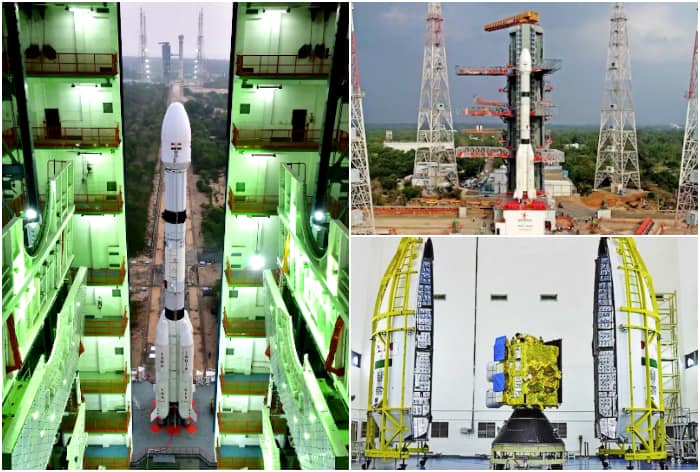ISRO's INSAT-3DS is expected to improve meteorological observations and monitor land and ocean surfaces. It is also designed to improve weather forecasting and disaster warning systems.
ISRO INSAT-3DS Mission: The Indian Space Research Organization (ISRO) is gearing up for the planned launch of the INSAT-3DS satellite on board the GSLV-F14 rocket. This mission is supported and fully funded by the Ministry of Earth Sciences (MoES), marking a crucial advancement in the country's meteorological capabilities. The satellite will take off from the Satish Dhawan Space Center (SDSC-SHAR) in Sriharikota on Saturday at 5:30 PM IST. Notably, INSAT-3DS is the latest addition to India's third generation of meteorological satellites in geostationary orbit.
ISRO's reliable GSLV-F14 will place the satellite in geosynchronous transfer orbit (GTO), with maneuvers designed to position it in geostationary orbit.
Insat-3DS in space
The INSAT-3DS is designed to advance meteorological observations and monitor Earth's land and ocean surfaces and would focus on improving weather forecasting and disaster warning systems. Working with the operational INSAT-3D and INSAT-3DR satellites, it will enhance the meteorological services they currently provide, demonstrating India's growing self-reliance in space technology.
The satellite's primary purposes are diverse and vital for environmental monitoring and safety. The satellite is loaded with numerous spectral channels important for meteorological analyses. It monitors the Earth's surface and makes essential oceanic observations.
Moreover, the ISRO satellite will provide vertical profiles of atmospheric parameters such as temperature and humidity, which are important for accurate weather forecasting. Data collection and dissemination capabilities will benefit data collection platforms (DCPs).
This will increase the efficiency of information collection. The satellite will also contribute to emergency response by providing satellite-assisted search and rescue services.
Various departments under the Ministry of Earth Sciences (MoES) including the India Meteorology Department (IMD), National Center for Medium-Range Weather Forecasting (NCMRWF), Indian Institute of Tropical Meteorology (IITM), National Institute of Ocean Technology (NIOT), and the Indian National Center for Ocean Information Services (INCOIS), will benefit from the valuable data provided by INSAT-3DS.
Anticipating improved weather forecasting and meteorological services, these agencies and institutes look forward to utilizing the advanced capabilities of ISRO's INSAT-3DS satellite.


